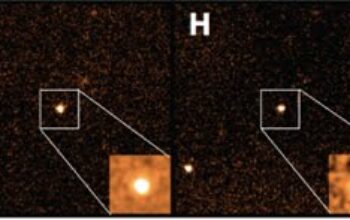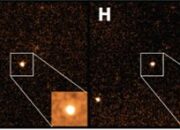In the burgeoning realm of technology, few fields capture the imagination quite like quantum computing. This cutting-edge discipline stands at the confluence of physics, computer science, and information theory. As we unravel the complexities of quantum mechanics, we unveil an era of potential that promises to revolutionize sectors ranging from cryptography to healthcare. The implications of this transformative technology extend far beyond conventional thinking, reshaping our approach to problems once deemed insurmountable.
To understand the significance of quantum computing, we must first grasp its foundational principles. Traditional computers utilize bits as the smallest unit of data, which can exist in one of two states: 0 or 1. In contrast, quantum computers operate using quantum bits, or qubits. Unlike their classical counterparts, qubits can exist in a superposition of states, allowing them to represent both 0 and 1 simultaneously. This property exponentially enhances computational power, enabling quantum computers to solve complex problems at speeds unattainable by classical machines.
One of the most compelling promises of quantum computing lies in its capacity for optimization. Many real-world problems, particularly in logistics and supply chain management, are characterized by non-linearities that render traditional algorithms ineffective. For instance, consider the challenge of optimizing delivery routes for a fleet of vehicles. Classical approaches involve time-consuming calculations and heuristics, whereas quantum algorithms such as the Quantum Approximate Optimization Algorithm (QAOA) can explore multiple solutions concurrently. This capacity could lead to swifter and more cost-effective solutions, fundamentally altering how industries operate.
Moreover, quantum computing’s potential extends into the realm of material science, where the simulation of molecular interactions stands as a monumental challenge. The traditional methods of studying material properties require simplifications that often fail to capture the intricacies of quantum behavior. Quantum computers can analyze molecular structures in their entirety, thereby unlocking innovative pathways to the development of new materials. This could consequently foster breakthroughs in energy storage, catalysis, and electronics, propelling society towards unprecedented technological advancements.
Cryptography represents another domain on the precipice of a paradigm shift due to quantum computing. The security of conventional encryption methods relies heavily on the computational infeasibility of factoring large numbers—a task at which quantum computers excel. Algorithms such as Shor’s algorithm illustrate the potential of quantum computing to dismantle established cryptographic frameworks. Consequently, the introduction of quantum key distribution (QKD) provides a promising countermeasure, facilitating secure communication channels grounded in the principles of quantum mechanics. The marriage of quantum computing and cryptography may thus usher in a new era of data security.
As we further delve into the realm of healthcare, quantum computing reveals its propensity to revolutionize this critical sector. The processing power inherent in quantum computers enables substantial advancements in medical research and treatment. From drug discovery to genomics, the ability to model complex biological systems in ways previously considered impractical can lead to personalized medicine tailored to individual genetic profiles. Quantum algorithms can expedite the analysis of large datasets, propelling forward the timeline for scientific discoveries that could ultimately save lives.
Another unexpected yet significant consequence of quantum computing is its potential to impact artificial intelligence (AI). Machine learning models, particularly those that involve substantial datasets, stand to benefit from the enhanced computational capabilities of quantum systems. Quantum machine learning could enable the rapid training of algorithms to recognize patterns and make predictions, thereby elevating AI applications across diverse fields, including autonomous systems, finance, and environmental science. This synthesis of quantum computing and AI highlights an intricate interplay that holds the potential to revolutionize decision-making processes globally.
Nevertheless, the journey towards realizing the full potential of quantum computing is fraught with challenges. Practical implementations must address issues such as qubit coherence, error rates, and the development of scalable systems. The field is still in its nascent stages, and researchers are actively working to surmount these technical obstacles. Collaborative efforts among physicists, computer scientists, and engineers are vital to foster innovation and ensure that quantum computing transitions from theoretical allure to tangible application.
As the landscape of quantum computing evolves, the ethical implications surrounding its deployment warrant careful consideration. The advent of such powerful technology brings forth concerns regarding cybersecurity, privacy, and equitable access. Policymakers and technologists must universally engage in dialogue to establish frameworks that safeguard societal interests while promoting responsible innovation. Striking a balance between technological advancement and ethical standards will be pivotal as quantum computing continues to navigate uncharted waters.
In conclusion, quantum computing stands poised to redefine the technological frontier, offering promises of unparalleled computational power and novel solutions to complex problems. Its impact on optimization, material science, cryptography, healthcare, and artificial intelligence illustrates the technology’s multifaceted potential. As we stand at the precipice of this quantum revolution, the imperative remains: to harness the promise of quantum computing responsibly, ensuring that its benefits are realized equitably across society. The future, illuminated by the possibilities of quantum technology, beckons us to engage in profound exploration and innovation.










